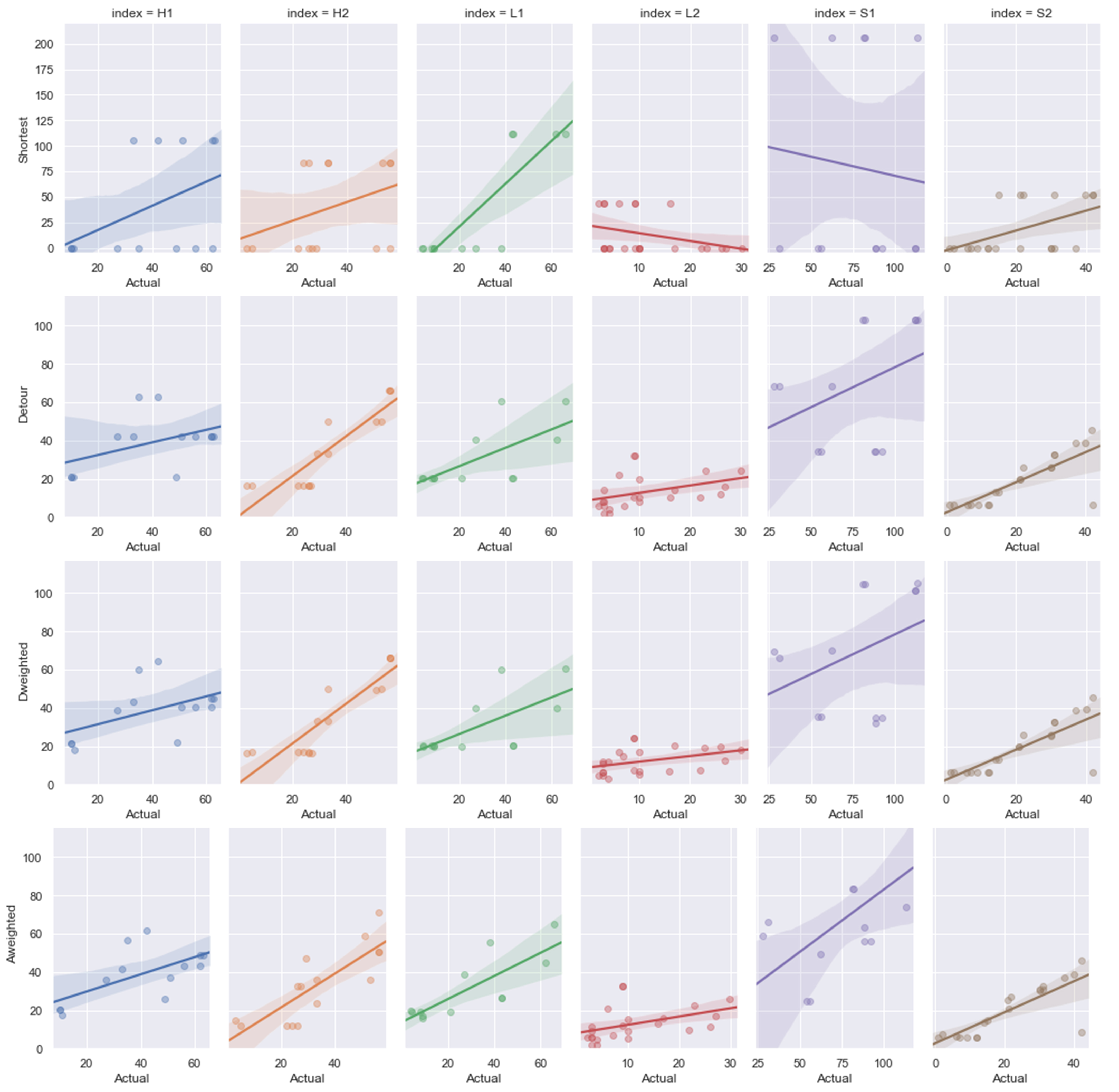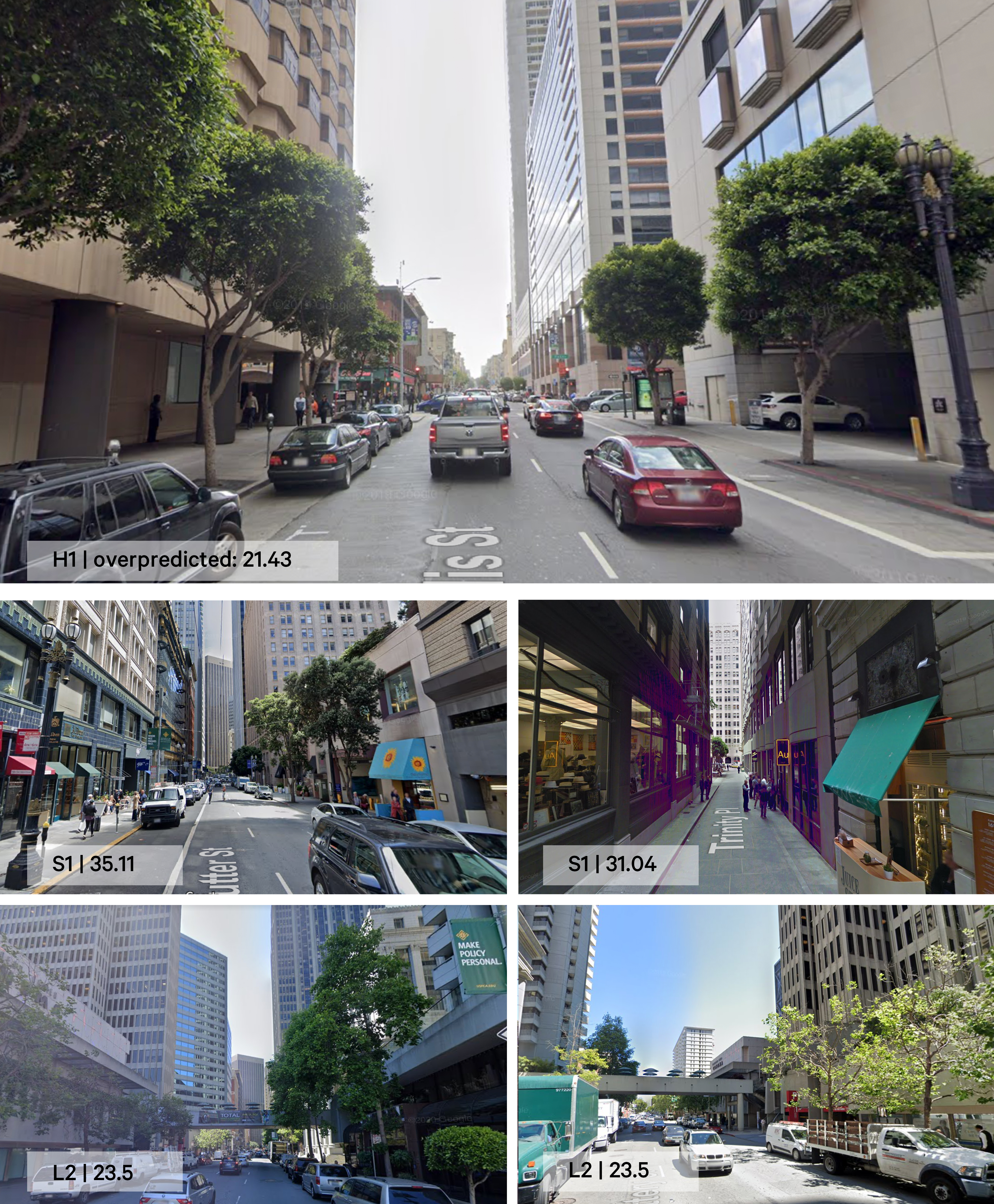#UrbanResearch #Thesis
Journey as Destination (Research)
; route choice improvement by measuring pedestrian experience
Harvard Graduate School of Design | Thesis
Instructor: Alex Krieger, Andres Sevtsuk
Tools: ArcGIS, Python/JupyterNotebook/Pandas, Adobe Illustator, Excel
︎ Prototype | ︎︎︎ Product Design
Instructor: Alex Krieger, Andres Sevtsuk
Tools: ArcGIS, Python/JupyterNotebook/Pandas, Adobe Illustator, Excel
︎ Prototype | ︎︎︎ Product Design
> Can we improve pedestrian experiences
by offering them alternative routes?

Description
This project demonstrates the way of enriching the pedestrian experience by designing the journey based on individual preferences. The research started with understanding pedestrian behavior and modifying their habits by offering alternatives, and it suggests playful options that enable people to explore the city based on individual criteria. By designing a walking experience within the existing infrastructure of the cities, this system re-shapes the journey into a more joyous one.
The journey thus becomes more than a way to arrive somewhere; it becomes a destination itself.
Background Research
| Human Decision-making Process |

| Bounded Rationality Theory |
According to bounded rationality theory, it is not feasible to make a perfect economic decision due to the inadequacy of information people can gather and compute. Rather, people make their choices based on their preferences and perception from their own experiences.
Questions
to offer optimized routes for a better walking experience,
- How far are people willing to walk more?
-
How do we determine which route is better than the others?
- How do we provide this information to users?
Efficiency
Detour Ratio Analysis
A detour ratio analysis was conducted to understand the current behavior of pedestrians regarding how far they walk versus the shortest route. The detour ratio, the percentage that people detour from the shortest route, was calculated from a sample of 22,636 pedestrian trajectories in San Francisco.
 22,636 Pedestrian Trajectories in San Francisco
22,636 Pedestrian Trajectories in San Francisco


Experience
Pedestrian Flow Model
Through the pedestrian flow model analysis, it is demonstrated that pedestrians consider attributes on streets for their route decision-making in addition to considering the distance.
The most preferable route regarding the quality of experience can be measured by calculating ‘perceived distance’.





Perceived distance and Actual distance are compared after being calculated according to the tree coverage and the number of amenity on each street.

| Overpredicted |

| Underpredicted |

Actual vs. Estimated

Moreover, this methodology allows pedestrians to choose an optimized route based on individual criteria: users designate the preferences, and their associated attributes are applied as weights for computing the ‘perceived distance’ to get the best route.
The data accumulated by users could be analyzed and provided to decision-makers for a feedback loop. For instance, the interests the users select can represent the citizen’s expectations from the public space, and thechosen routes reflect how well the physical attributes are related to these expectations and which street segments are serving them well. Ideally, this data can be compared with design and planning intention, and it would generate a constructive feedback loop. Thus, it will establish a responsive environment which adapts to how the city spaces are perceived as well as the enjoyment experienced by citizens.
![]()
︎︎︎ Next Step (Product Design)
︎︎︎ Go Back
Scalability and Feedback loop

︎︎︎ Next Step (Product Design)
︎︎︎ Go Back